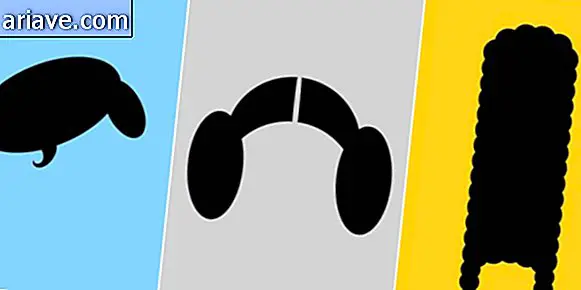Believe me, the strawberries in this photo don't even have a drop of red!
Do you remember the controversy of the blue and black / white and gold dress? What about the baby blue / white bag? There was also the blue and white / black and brown jacket, and the gray, blue or red pills! Because since there was no debate about the color of something for some time, the Japanese psychologist Akiyoshi Kitaoka, from Ritsumeikan University in Japan, decided to shake things up on the internet posting the image you saw above.
According to Mike Mcrae of Science Alert, what Kitaoka did was take a picture of a tasty strawberry shortcake and replace all the red pixels in the image with gray - meaning that, oddly enough, the image doesn't have not even a drop of red, even though our eyes register that color in the picture. See again below:
2????????????????????????(???)???????????????????? ?
- Akiyoshi Kitaoka (@AkiyoshiKitaoka) February 28, 2017
Strawberries appear to be reddish, though the pixels are not. pic.twitter.com/Ginyhf61F7
So, dear reader, what color do you see the strawberries in the picture?
Optical illusion
As you can well imagine, it is clear that photography has sparked discussion among unbelieving netizens who would rather believe what their eyes were saying than in crazy Japanese! However, those who took the trouble to analyze the photo with the help of image editing programs could prove that Kitaoka did not apply any strange filters to the illustration - nor was it fooling anyone. Check it out:

In fact, the culprits for deceiving us in this way are not the eyes but the brain, and the curious effect of the image has a name: color consistency. Incidentally, the explanation of the phenomenon is also interesting. As we explained earlier here in Mega Curious, the colors we see are nothing more than the way our eyes interpret the wavelengths of light that are reflected by objects.
Depending on the composition of a particular material, the different lengths of light travel through it differently. Thus, after light is absorbed by a particular object, our eyes see the color - or wavelength - that object reflects.
Because the different wavelengths make the photoreceptors in our eyes send signals to our brain, which in turn processes this information and produces the experience we understand as color. But there's more: our brain has also learned to compensate for light variations that could create confusion in color interpretation.
Data processing
What happens is that the colors of objects may look different depending on the lighting - whether we are indoors in artificial light, camping in the moonlight or taking a walk on a sunny day, for example. In the case of sunny days, there would be more short wavelengths, which we would normally perceive as bluish tones.

Thus, if we look at an object under these conditions, it would reflect more of those shorter waves to our eyes - which would send signals to our brain. And he should theoretically process colors differently if the same object were observed at night. But our (smart) brain has developed a kind of “filter” to compensate for these differences, which is why we perceive something green as being green regardless of whether it's day or night or whether we're indoors or out on a sunny day. .
Going back to the strawberry shortcake, how our brain has learned to process visual stimuli so that the colors don't change with the varying light of the environment we are in, although Kitaoka completely eliminated the red color from the picture, our brain He knows that strawberries are red, so that's how he processes the image information - and makes us see the fruits in the color they should have.











